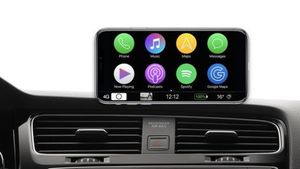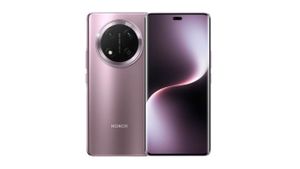JAKARTA - An eight-year-old boy who has cerebral palms and throughout his life depends on wheelchairs, has recently been able to walk alone thanks to exoskeleton robots specially designed for children.
David Zabala, was able to walk alone after his body was equipped with a new Atlas 2030 outer frame equipped with a mechanical connection that adapted to his movements. Thanks to the tool, he was finally able to walk freely.
This innovation is part of a therapeutic method used at a health facility in Mexico City, as research shows that it provides paralyzed children with the opportunity to walk not only to extend their lives' expectations and improve their physical well-being, but also to increase their self-esteem.
The tool helps to achieve rehabilitation goals in just a short time. Meanwhile, if conventional therapy is going to take months, "said Guadalupe Maldonado, Director of Association of People with Cerebral Palsy Mexico to AFP.
This tool was made by Elena Garc way Fleet who won the 2022 European Developer Award for the innovation. Atlas 2030 is a pediatric exoskeleton designed specifically for children aged three to 14 years.
The mechanical connection wraps the child's legs and waist, and attaches to the above-wheeled structure for additional support.
David's mother, Guadalupe Cardoso, witnessed her son take his first steps in the therapy room. "Initially he was scared and his hands were very tense," he told AFP.
'I saw that the tool gave him more strength and increased in the way. He was very interested in walking, he was there taking his first steps. It was a joy for him. He was very happy," Cardoso said.
While wearing the robot suit, David can now carry out several activities such as playing football and drawing, this is something he never expected might happen.
The therapists are also happy with this new technology, as they equip David with an outside framework they know at any time he will take his first steps.
"It makes us very happy to have an exoskeleton and we can even use it now to achieve all of this," said 28-year-old physical therapist Arturo Palafox Sanchez. This motivates us as therapists that we will be able to achieve a lot in the future.
The Mexican Association for People with Cerebral Palsy (APAC) received the device two weeks ago and aims to help at least 200 children with cerebral palsy nationwide.
After Spain and France, Mexico is the third country to offer treatment with the device.
"We see good results in children, and we want to continue working and empowering, so that more children in cities and countries have access to this type of rehabilitation, because we always accept children who need neurorobotic rehabilitation and who radically change their lives," Maldonado said, who was also quoted by the Daily Mail.
According to Maldonado, exoskeletons also quickly achieve rehabilitation targets that usually take months if using traditional methods. This includes strengthening the sand muscle to improve the digestive system and children's lungs.
But the biggest increase seen in a child wearing a robotic suit is their morale.
The English, Chinese, Japanese, Arabic, and French versions are automatically generated by the AI. So there may still be inaccuracies in translating, please always see Indonesian as our main language. (system supported by DigitalSiber.id)













